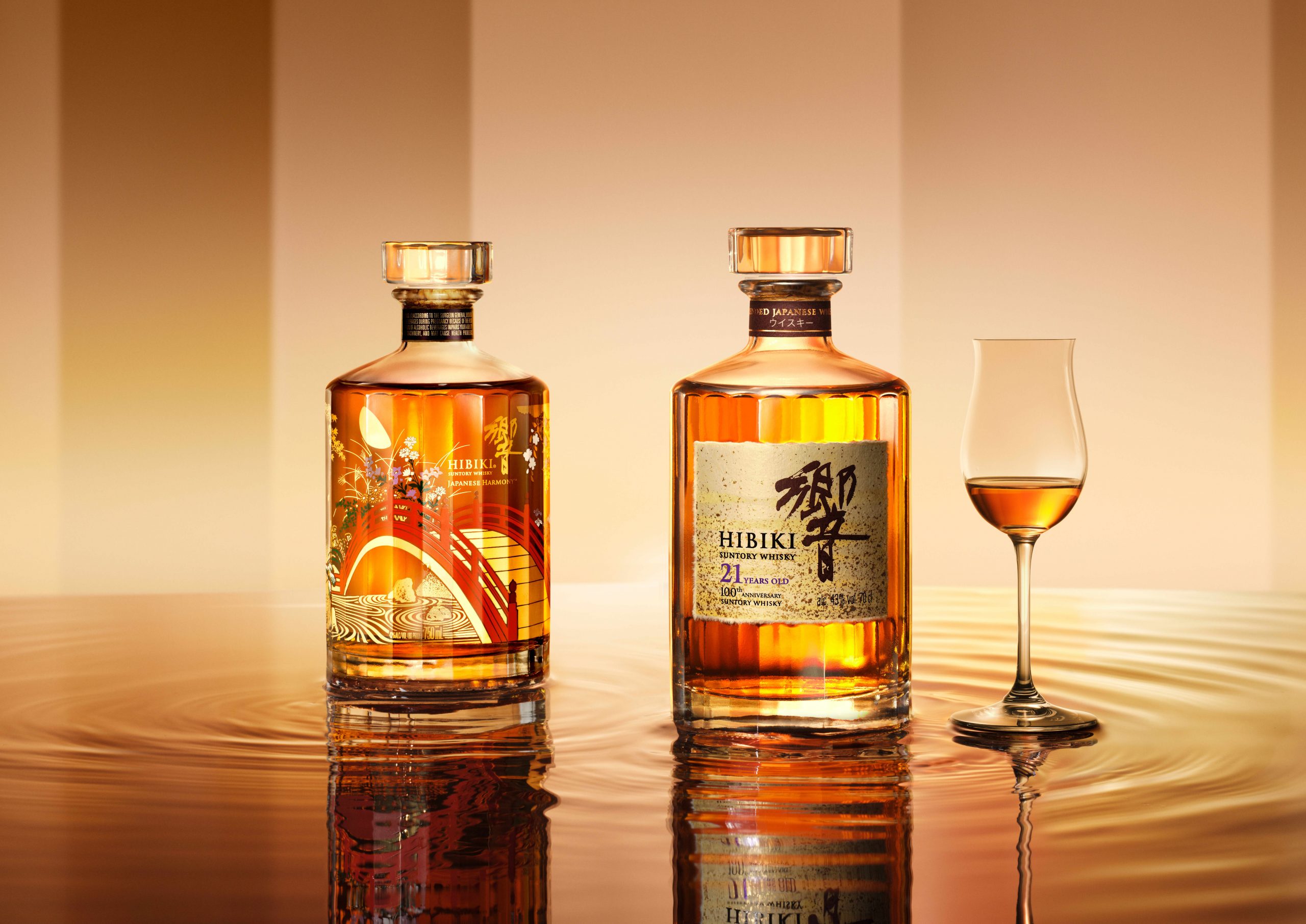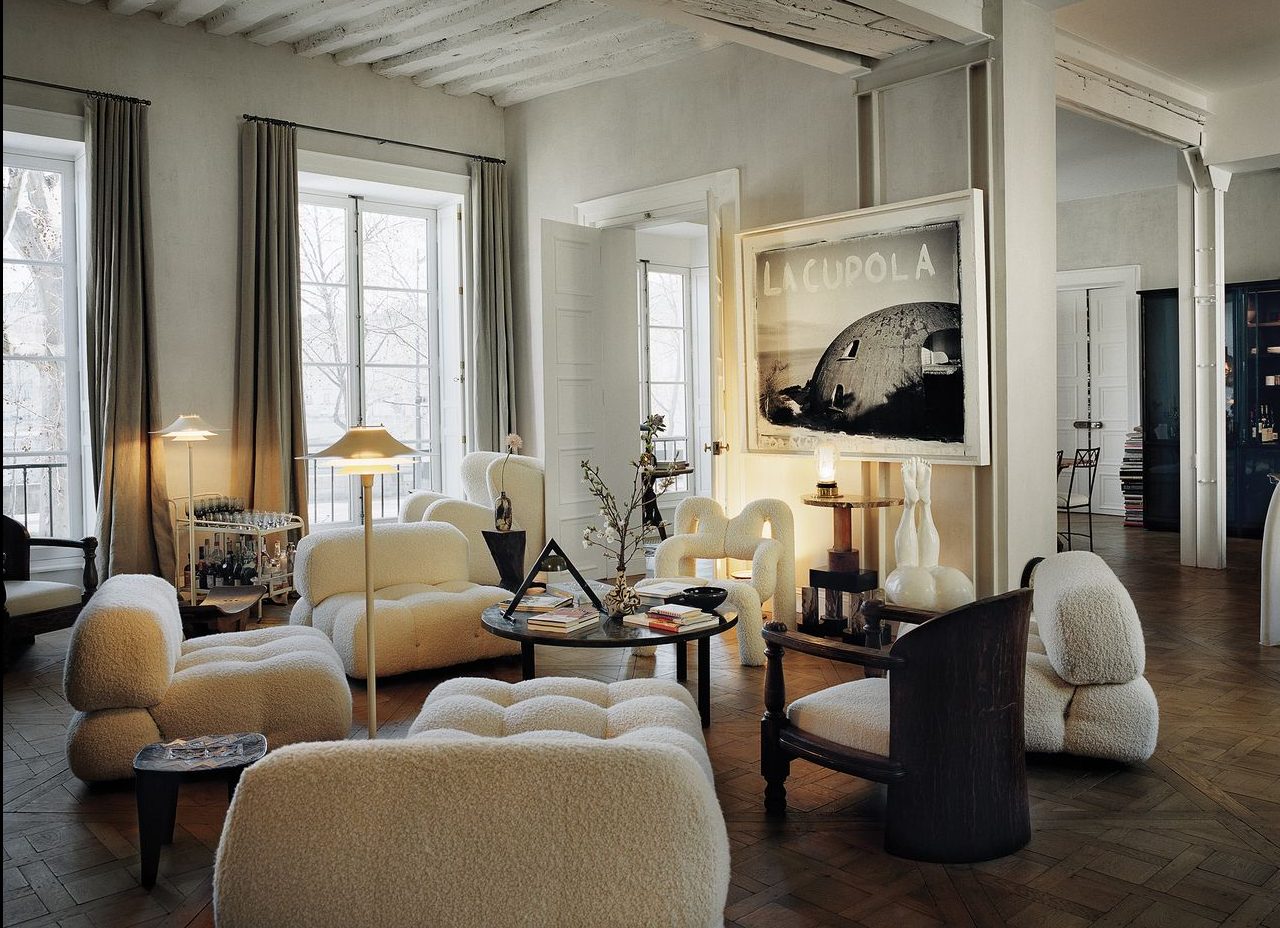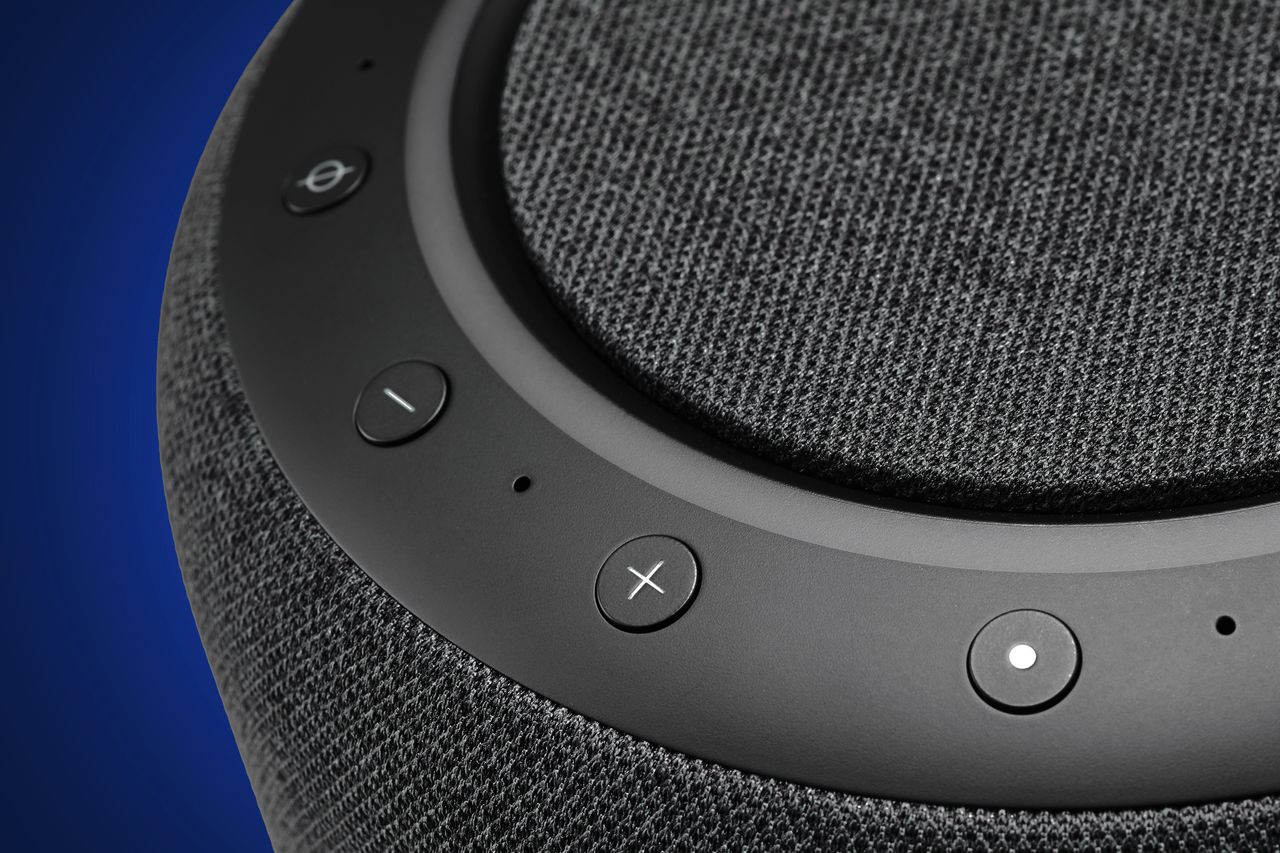When Shinjiro Torii founded the Yamazaki Distillery in 1923, few would have been able to forecast the enormous force his company, Suntory Whisky, would go on to become a century later.
Over the past decade in particular, Japanese whisky has evolved from a curiosity known only to connoisseurs into a powerhouse beloved in every corner of the whisky world. As chief blender for Suntory Whisky, Shinji Fukuyo has spearheaded this modern surge, and enjoys a unique position as the House of Suntory celebrates its 100-year anniversary.
“Witnessing the global impact of Suntory whiskies brings me great personal fulfilment and fuels my passion for creating beloved whiskies for everyone to enjoy,” Fukuyo says. Over the 100 years the company has been producing whisky, he is only the fifth person to hold the title of chief blender. He was named to the position in 2009 after an extensive history working for the company at the Yamazaki Distillery, Japan’s first whisky distillery.
Suntory has been hosting a year of celebrations in honour of its centennial, the highlight of which has been the release of a suite of Centennial Limited Edition whiskies. The lineup includes Yamazaki 18-year-old Mizunara (US$1,500), Hakushu 18-year-old Peated Malt (US$1,200), and a centennial bottling of Hibiki 21-year-old (US$5,000). Each of the three was blended by Fukuyo to showcase a unique flavor profile and characteristic that stands apart from its typical bottlings. The Yamazaki and Hakushu whiskies were released this May, while the Hibiki debuted in a separate release last month.

House of Suntory
Another component of this year’s ongoing Suntory centennial fete was the Sofia Coppola directed Suntory Time tribute film, as well as the Roman Coppola directed docuseries, The Nature and Spirit of Japan, both of which starred Keanu Reeves. Elsewhere around Japan, other prominent businesses have been getting in on the fun as well. For instance, a 30-minute drive from the Yamazaki Distillery, Hotel the Mitsui Kyoto’s signature restaurant Toki—which happens to share the name of a Suntory Whisky product—has unveiled an elaborate Hibiki whisky pairing dinner, while its Garden Bar has offered an exclusive menu of Hibiki cocktails.
Fukuyo spoke with Penta about the century-long legacy of the House of Suntory, as well as the creation of this year’s honorary Centennial Limited Edition whisky releases.
Penta: What does this special occasion signify for you?
Shinji Fukuyo: Shinjiro Torii’s legacy began with a dream to create an original whisky that would suit the delicate palate of the Japanese consumers that is blessed with the riches of Japanese nature and craftsmanship. As chief blender, I am dedicated to upholding Suntory’s rich legacy and traditions, while expressing our craftsmanship through the whiskies that my team and I create.
As Japanese whisky has soared in popularity over the past decade, what are the qualities that define Suntory’s whiskies and have helped make them so special for drinkers around the world?
We use high-quality natural water, which has been nurtured over many years, to produce a delicate spirit. The natural environment and climate of where our distilleries sit in Japan also influences our whiskies. Our climate highlights the dynamic changes of the four seasons, including humid, hot summers and dry, cold winters to give our whisky a deep sense of maturity.
The quality of whisky is showcased in the flavor and aroma that is developed over time by producing a rich distillate from good raw materials and placing it in high-quality casks. Also, to bring out the harmony of flavor and aroma, we carefully proceed and blend various types of whiskies in a skillful balance, which I believe embodies the delicate Japanese craftsmanship.
What was your approach with this year’s limited-edition whiskies?
The existing Yamazaki 18-year is a product that combines American oak, Spanish oak, Mizunara oak, and smoky Yamazaki malt to express complexity while highlighting the character of Spanish oak. On the other hand, the limited-edition Yamazaki 18-year-old Mizunara uses only malt whiskies aged in Mizunara barrels for a minimum of 18 years and features cinnamon and nutmeg aromas, with undertones of Japanese incense, sandalwood, and dry coconut emphasized in the finish, with subtle spices.
For Hakushu, both our existing Hakushu 18-year-old and the limited Hakushu 18-year-old Peated Malt are blended with various whiskies aged in Hakushu, including American and Spanish oak, heavy peated and non-peated, for a smoky yet fruity and sweet finish. The limited edition is balanced with several peated Hakushu malt whiskies aged in American oak for over 18 years to produce a fresh and crisp smoky taste.

House of Suntory
Looking ahead to the next few decades, how do you envision Suntory continuing to evolve? How about Japanese whisky as a category on the whole?
For these 100 years, we have been striving to create a culture where Japanese consumers can enjoy whisky. These are values we still prioritize today, as our team is constantly in the pursuit of enhancing our quality and craftsmanship. As we look to the future, we have seen a growing global interest in Japanese products and believe that there are further opportunities to spread the excellence of Suntory Whisky throughout the world.
This interview has been edited for length and clarity.
 Copyright 2020, Dow Jones & Company, Inc. All Rights Reserved Worldwide. LEARN MORE
Copyright 2020, Dow Jones & Company, Inc. All Rights Reserved Worldwide. LEARN MORE
What a quarter-million dollars gets you in the western capital.
Alexandre de Betak and his wife are focusing on their most personal project yet.
As Paris makes its final preparations for the Olympic games, its residents are busy with their own—packing their suitcases, confirming their reservations, and getting out of town.
Worried about the hordes of crowds and overall chaos the Olympics could bring, Parisians are fleeing the city in droves and inundating resort cities around the country. Hotels and holiday rentals in some of France’s most popular vacation destinations—from the French Riviera in the south to the beaches of Normandy in the north—say they are expecting massive crowds this year in advance of the Olympics. The games will run from July 26-Aug. 1.
“It’s already a major holiday season for us, and beyond that, we have the Olympics,” says Stéphane Personeni, general manager of the Lily of the Valley hotel in Saint Tropez. “People began booking early this year.”
Personeni’s hotel typically has no issues filling its rooms each summer—by May of each year, the luxury hotel typically finds itself completely booked out for the months of July and August. But this year, the 53-room hotel began filling up for summer reservations in February.
“We told our regular guests that everything—hotels, apartments, villas—are going to be hard to find this summer,” Personeni says. His neighbours around Saint Tropez say they’re similarly booked up.
As of March, the online marketplace Gens de Confiance (“Trusted People”), saw a 50% increase in reservations from Parisians seeking vacation rentals outside the capital during the Olympics.
Already, August is a popular vacation time for the French. With a minimum of five weeks of vacation mandated by law, many decide to take the entire month off, renting out villas in beachside destinations for longer periods.
But beyond the typical August travel, the Olympics are having a real impact, says Bertille Marchal, a spokesperson for Gens de Confiance.
“We’ve seen nearly three times more reservations for the dates of the Olympics than the following two weeks,” Marchal says. “The increase is definitely linked to the Olympic Games.”

Getty Images
According to the site, the most sought-out vacation destinations are Morbihan and Loire-Atlantique, a seaside region in the northwest; le Var, a coastal area within the southeast of France along the Côte d’Azur; and the island of Corsica in the Mediterranean.
Meanwhile, the Olympics haven’t necessarily been a boon to foreign tourism in the country. Many tourists who might have otherwise come to France are avoiding it this year in favour of other European capitals. In Paris, demand for stays at high-end hotels has collapsed, with bookings down 50% in July compared to last year, according to UMIH Prestige, which represents hotels charging at least €800 ($865) a night for rooms.
Earlier this year, high-end restaurants and concierges said the Olympics might even be an opportunity to score a hard-get-seat at the city’s fine dining.
In the Occitanie region in southwest France, the overall number of reservations this summer hasn’t changed much from last year, says Vincent Gare, president of the regional tourism committee there.
“But looking further at the numbers, we do see an increase in the clientele coming from the Paris region,” Gare told Le Figaro, noting that the increase in reservations has fallen directly on the dates of the Olympic games.
Michel Barré, a retiree living in Paris’s Le Marais neighbourhood, is one of those opting for the beach rather than the opening ceremony. In January, he booked a stay in Normandy for two weeks.
“Even though it’s a major European capital, Paris is still a small city—it’s a massive effort to host all of these events,” Barré says. “The Olympics are going to be a mess.”
More than anything, he just wants some calm after an event-filled summer in Paris, which just before the Olympics experienced the drama of a snap election called by Macron.
“It’s been a hectic summer here,” he says.

AFP via Getty Images
Parisians—Barré included—feel that the city, by over-catering to its tourists, is driving out many residents.
Parts of the Seine—usually one of the most popular summertime hangout spots —have been closed off for weeks as the city installs bleachers and Olympics signage. In certain neighbourhoods, residents will need to scan a QR code with police to access their own apartments. And from the Olympics to Sept. 8, Paris is nearly doubling the price of transit tickets from €2.15 to €4 per ride.
The city’s clear willingness to capitalise on its tourists has motivated some residents to do the same. In March, the number of active Airbnb listings in Paris reached an all-time high as hosts rushed to list their apartments. Listings grew 40% from the same time last year, according to the company.
With their regular clients taking off, Parisian restaurants and merchants are complaining that business is down.
“Are there any Parisians left in Paris?” Alaine Fontaine, president of the restaurant industry association, told the radio station Franceinfo on Sunday. “For the last three weeks, there haven’t been any here.”
Still, for all the talk of those leaving, there are plenty who have decided to stick around.
Jay Swanson, an American expat and YouTuber, can’t imagine leaving during the Olympics—he secured his tickets to see ping pong and volleyball last year. He’s also less concerned about the crowds and road closures than others, having just put together a series of videos explaining how to navigate Paris during the games.
“It’s been 100 years since the Games came to Paris; when else will we get a chance to host the world like this?” Swanson says. “So many Parisians are leaving and tourism is down, so not only will it be quiet but the only people left will be here for a party.”















